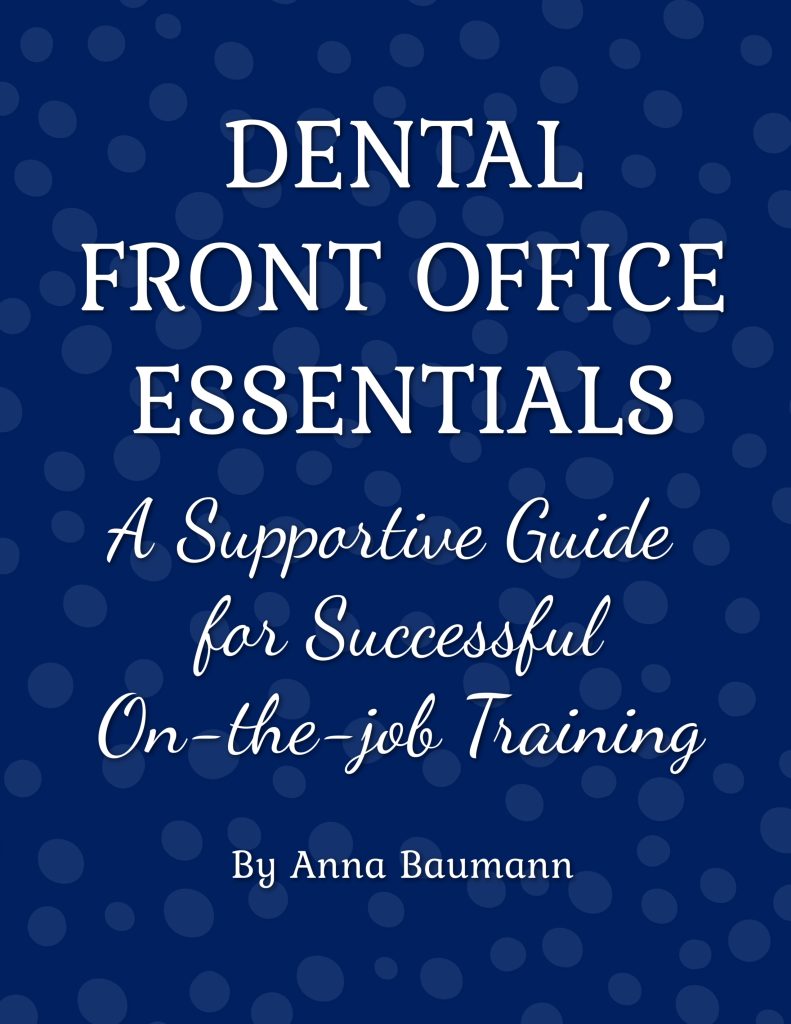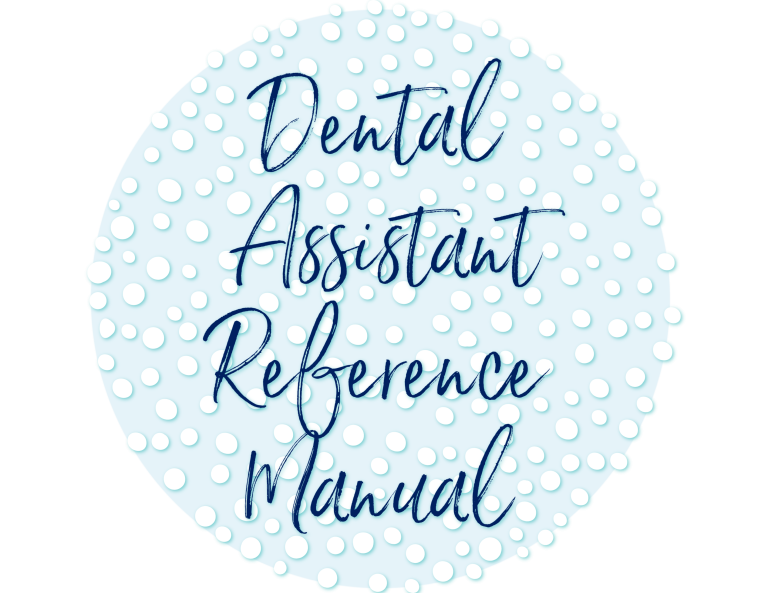A Simplified Approach To Dental Insurance and Billing
Last Updated on March 25, 2024 by Anna Baumann
A Simplified Approach to Dental Insurance and Billing
A lot goes into the insurance and billing portion of running a dental practice. Enough that whole companies exist just to provide support for it. And those companies are what most offices turn to when the going gets tough in the insurance and billing department. I’m not against outsourcing. For many dental practices, it’s the best way to go. But if you’re at the point where you feel overwhelmed, give this a read. With a simplified approach to dental insurance and billing, you might find that all you need to do is tweak a few things.
Verifying Eligibility
I always verify dental insurance eligibility for new patients, and for current patients who have new coverage. But most offices have a system of contacting insurance companies to verify eligibility for all scheduled patients one or several days prior to their appointments. Why? It’s a massive waste of time.
Talk to your patients.
Instead of spending hours on a task (that does not guarantee its information) ask your patients if their coverage changed when they’re in the office. Work it into your greet or release conversation. I usually say something like, “Is your dental coverage still through (insert insurance company) with (insert employer)?” If something changed it doesn’t take more than a few minutes to update the information.
Set up a login for every online portal, with every dental insurance company!
Even if you have to make a phone call now and then, you’re still way more ahead of the game than if you spend hours checking on every scheduled patient, every day. If you haven’t already, start now and create log-ins for all dental insurance provider portals. You can verify eligibility in less than five minutes online! Here is a basic list of sites to get you started. (I’m in IL so some are specific to IL).
- Aetna: https://www.aetna.com/provweb/
- Allied Benefit Systems https://www.alliedbenefit.com/PFT
- Ameritas https://www.ameritas.com/employee-benefits/providers/
- BCBS of IL: https://www.dnoaconnect.com/
- Cigna: https://cignaforhcp.cigna.com/
- Delta Dental: https://www.deltadental.com/us/en/dentist.html
- Delta of IL: https://www.deltadentalil.com/
- Dental Office Toolkit: https://www.dentalofficetoolkit.com/
- Guardian: https://www.guardianlife.com/providers
- Humana: https://www.humana.com/provider/dentist-resources
- MetLife: https://www.metdental.com/prov/execute/home
- Principal: https://www.principal.com/dental-providers
- Sun Life: https://www.sunlife.com/us/en/dentists-and-dental-offices/
- United Healthcare: https://www.dbp.com/
Use this simple password log to keep track of your login information.
I understand that patients often forget to offer us their updated information when they have a coverage change. (Actually, I think most of them believe there is a special secret service that sends us the dental insurance coverage status of everyone in the world! 🙂 ) But it’s okay! The worst thing that happens if they forget to give it to you and you forget to ask, is a denied claim. If you’re submitting electronically, you may know this immediately because often the clearinghouse alerts you. If they don’t, you’ll find out in a few days and resolve the problem. By the way, if you’re not submitting claims electronically, get on that TODAY!
Consider this about verifying eligibility for every scheduled patient:
- Are enough of your claims denied because of coverage changes to warrant the amount of time spent on your daily audit and verification routine?
- Every time you check eligibility online or over the phone, the first message you get is, “This information is not a guarantee of coverage.” Even an insurance ID card is not a guarantee of coverage. Insurance companies guarantee nothing until they receive a claim. That literally means that you spend valuable time gathering information that confirms nothing.
Benefit breakdowns
You don’t need one of those super-involved benefit breakdown forms. Why are we spending so much time on this when it’s impossible to get every exclusion and limitation for every covered code? And at the end of the day, knowing what is covered doesn’t change the fact that none of it matters until a claim is processed.
A basic breakdown is all you need.
Plug it into your software with yearly/period maximum, deductible, and percentage per category. Then you can create treatment plans that give patients a guesstimate of what their insurance will cover. Because that’s all it is; a guess.
If your office is contracted with a plan, you have a fee schedule to plug into your software. This gets you a closer guess. Submitting pre-treatment estimates also gives you a better idea of coverage. But even that is not a promise of payment because dental plans don’t do pre-authorizations. They do pre-estimates. This is why on every one of them you see the disclaimer; “This is not a guarantee of payment.”
Benefit breakdown forms are a false sense of security.
You may think if you have a fancy form with lots of information on it you can confidently tell patients that their treatment will be covered. But always remember: Just because a code is a covered benefit does not mean it will be covered for every patient, in every situation.
Never tell patients that their insurance will cover anything.
^Read that again^ I don’t care if you have a detailed benefit breakdown, a pre-treatment estimate, and a representative from the insurance company on the phone. Always use words like; estimated, estimate, approximate, and around. When I make financial arrangements for patients who have insurance, I tell them to plan on paying their “ESTIMATED PORTION” at the time of treatment.
Consider this about benefit breakdowns:
- Insurance companies offer no guarantee for the information they give you.
- It is impossible to get every limitation and exclusion, for every covered code, for every patient in your practice.
- The false sense of security that detailed benefit breakdowns create often results in the exact opposite outcome of what was intended. Patients agree to financial arrangements thinking they are based on facts, then get angry and lose faith in your practice when insurance doesn’t pay what they expected.
- If it does not guarantee your office payment or your patients’ coverage, why are you spending so much time on it?
Claims Processing
One of the biggest reasons dental practices feel overwhelmed by insurance claims processing is because they have a backlog of outstanding claims. My first big tip for claims processing is to get your backlog of outstanding claims under control! Anything 45 days or older is either pending information or the company didn’t receive it. Eat the frog, so you can start fresh! My second big tip is to…
Prepare and submit claims every day. Every. Single. Day.
In fact, depending on the size of your office you might want to submit twice a day; once just before lunch and once at the end of the day.
MORE TIPS for dental claims processing.
- Submit claims electronically. That alone is a huge time-saver!
- Attention to detail. The biggest reason insurance companies reject or deny claims is due to missing or incorrect information. Commit to entering patients’ personal and insurance information completely and correctly. Complete every insurance-related field in your software so that every space on paper and electronic forms is complete and correct. If this is a current problem in your practice, include it in your daily schedule audit to review and correct patient and insurance information. That way, you can avert potential issues before you create and submit claims.
- Chart Notes. Good insurance narratives come from good chart notes! Talk to your team. Set up note templates and ensure everyone understands the importance of entering complete and accurate chart notes!
- Create attachments and batch claims for submission as you check patients out. Have the mindset that you’ve not completed a patient release until their claim(s) is completed, batched, and either submitted or ready to submit.
- Follow up on outstanding claims weekly. Check everything 14 days and older. If you’re submitting electronically, nothing should take more than 14 days. Some companies turn them around within a week. Even paper claims shouldn’t take that long, as long as the company received them. Doing this weekly minimizes the number of claims you’ll follow up on at a time. It also helps you catch issues quickly.
- Sign up for electronic funds transfer with as many companies as you possibly can. It’s quick and efficient. For companies that don’t send notifications of processed claims, check websites weekly for ERAs to reconcile payments. Depending on your practice size you may need to do this twice a week or even daily. Experiment to find out what works best for your claims volume and number of providers.
- Send statements daily. As you enter insurance payments, create or batch statements for remaining balances due.
Summary
- Don’t waste precious front office time gathering undependable information. Toss out your detailed benefit breakdown form and get back to basics. I know it looks pretty and efficient but none of it matters until a claim is processed.
- Use your dental software and the latest technology to the fullest. Make sure you have the right tools for the job.
- Stay organized. Create and follow processing and follow-up systems. Complete tasks as they present themselves, instead of letting them pile up.
- Re-assess why you do things. Don’t be afraid to admit it if the reason you started doing something a certain way no longer makes sense.
Final Thoughts
From an Office Manager’s perspective, one of my biggest reasons for not wanting to outsource insurance and billing is that I enjoy that whole part of my job. I’m kind of a nerd that way. So much of what we do is patient-related and peopley, and I look forward to the administrative side that’s focused and challenging. If you take that out of the job description things get monotonous pretty quickly.
There are no special formulas that work for every practice 100% of the time. Use my tips as a guide to simplify what you already do. Sometimes making things a little less complicated is all you need to keep things on track.
‘Simplicity is the ultimate sophistication.’ ~ Leonardo da Vinci









One Comment